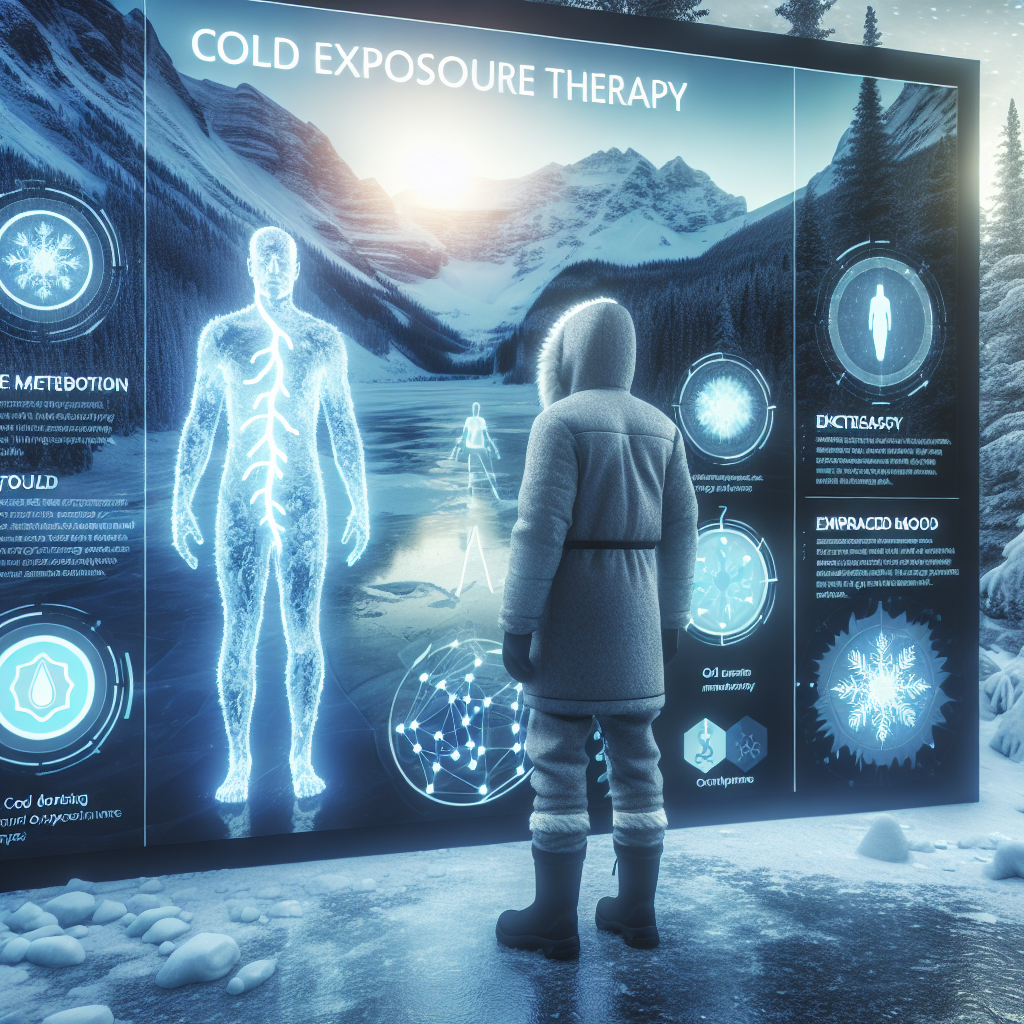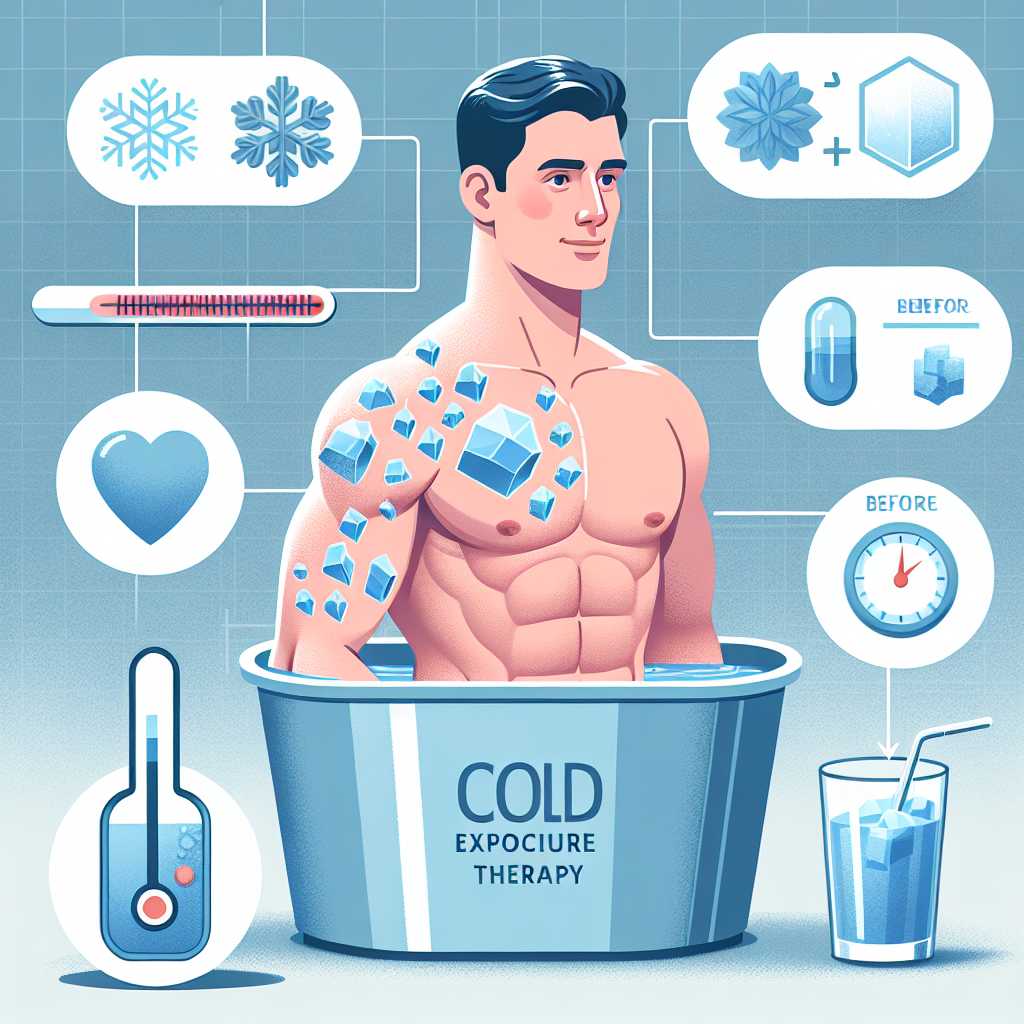How Cold Exposure Therapy Benefits Your Health

Discover the amazing health benefits of Cold Exposure Therapy! Boost your immune system, improve mental health, and enhance your overall well-being. Start your journey to a healthier you today. Learn more here.
Exploring the Health Benefits of Cold Exposure Therapy
Cold exposure therapy, also known as cryotherapy, has been gaining popularity in recent years due to its numerous health benefits. This therapy involves exposing the body to extremely cold temperatures for short periods, typically in a controlled environment. The concept of using cold as a form of therapy is not new; it has been practiced for centuries in various cultures. However, modern science has begun to uncover the mechanisms behind the health benefits of cold exposure therapy, providing a deeper understanding of its potential.
One of the most significant benefits of cold exposure therapy is its impact on the immune system. When the body is exposed to cold temperatures, it responds by increasing the production of white blood cells, the body’s primary defense against disease and infection. This boost in white blood cell production can help to strengthen the immune system, making it more effective at fighting off illnesses. Additionally, cold exposure therapy has been shown to reduce inflammation, a key factor in many chronic diseases.
Cold exposure therapy also has profound effects on the cardiovascular system. The cold stimulates the circulatory system, causing the heart to pump more blood to maintain body temperature. This increased blood flow can help to improve cardiovascular health by strengthening the heart and reducing the risk of heart disease. Furthermore, the cold can cause blood vessels to constrict and then dilate upon warming, which can help to improve blood flow and reduce blood pressure.
Another significant benefit of cold exposure therapy is its potential to aid in weight loss. The cold can stimulate the body’s metabolism, causing it to burn more calories to stay warm. Additionally, cold exposure can promote the production of brown fat, a type of fat that burns calories to generate heat. This can help to increase the body’s metabolic rate and promote weight loss.
Cold exposure therapy can also have positive effects on mental health. The body’s response to the cold can trigger the release of endorphins, the body’s natural “feel-good” hormones. This can help to improve mood and reduce symptoms of anxiety and depression. Additionally, the challenge of enduring the cold can help to build mental resilience, promoting a sense of accomplishment and boosting self-confidence.
Lastly, cold exposure therapy can aid in recovery from physical exertion. The cold can help to reduce muscle soreness and inflammation, speeding up the recovery process after a workout. This makes it a popular choice among athletes and fitness enthusiasts.
In conclusion, cold exposure therapy offers a wide range of health benefits, from boosting the immune system and improving cardiovascular health to aiding in weight loss and promoting mental well-being. However, it’s important to note that while cold exposure therapy can be beneficial, it should be done under the guidance of a healthcare professional to ensure safety. As with any therapy, it may not be suitable for everyone, particularly those with certain health conditions. Therefore, it’s always best to consult with a healthcare provider before starting any new health regimen.
Unlocking Wellness: The Impact of Cold Exposure Therapy on Health

Cold exposure therapy, also known as cryotherapy, has been gaining popularity in recent years as a method of promoting overall health and wellness. This therapy involves exposing the body to extremely cold temperatures for short periods of time, typically in a controlled environment. The benefits of this practice are numerous and varied, ranging from improved physical performance to enhanced mental well-being.
One of the most significant benefits of cold exposure therapy is its impact on physical health. When the body is exposed to cold temperatures, it responds by increasing blood circulation. This enhanced blood flow delivers more oxygen and nutrients to the muscles and organs, promoting faster recovery and improved performance. Athletes often use cold exposure therapy to speed up recovery after intense workouts or injuries. However, even non-athletes can benefit from this effect, as improved circulation can help to alleviate symptoms of conditions such as arthritis and fibromyalgia.
In addition to its physical benefits, cold exposure therapy can also have a positive impact on mental health. The body’s response to cold temperatures includes the release of endorphins, the body’s natural “feel-good” hormones. These hormones can help to reduce stress and anxiety, improve mood, and even alleviate symptoms of depression. Furthermore, the practice of regularly exposing oneself to cold temperatures can help to build mental resilience, as it requires a certain level of mental toughness to withstand the discomfort of the cold.
Cold exposure therapy can also contribute to improved immune function. The body’s response to cold temperatures includes an increase in the production of white blood cells, which play a crucial role in the immune system’s ability to fight off infections and diseases. Regular cold exposure can therefore help to boost the immune system, making the body more resistant to illness.
Another benefit of cold exposure therapy is its potential to aid in weight loss. When the body is exposed to cold temperatures, it burns more calories in an effort to stay warm. This increased calorie burn can contribute to weight loss, especially when combined with a healthy diet and regular exercise. Furthermore, cold exposure can also stimulate the production of brown fat, a type of fat that burns calories to generate heat, further contributing to weight loss.
Despite its numerous benefits, it’s important to note that cold exposure therapy should be approached with caution. It’s not suitable for everyone, and it can be dangerous if not done correctly. People with certain health conditions, such as heart disease or Raynaud’s disease, should avoid cold exposure therapy. Furthermore, it’s crucial to start slowly and gradually increase the duration and intensity of the cold exposure, to allow the body to adapt safely.
In conclusion, cold exposure therapy can offer a wide range of health benefits, from improved physical performance and mental well-being to enhanced immune function and potential weight loss. However, it’s important to approach this practice with caution and to consult with a healthcare professional before starting. With the right approach, cold exposure therapy can be a powerful tool for unlocking wellness and promoting overall health.
Cold Exposure Therapy: A Revolutionary Approach to Boosting Health
Cold exposure therapy, also known as cryotherapy, is a revolutionary approach to boosting health that has been gaining significant attention in recent years. This therapy involves exposing the body to extremely cold temperatures for short periods, typically in a controlled environment. The benefits of this innovative treatment are numerous, ranging from improved physical health to enhanced mental well-being.
The principle behind cold exposure therapy is rooted in the body’s natural response to cold. When exposed to cold temperatures, the body works to maintain its core temperature by increasing metabolic rate and blood flow. This process, known as thermogenesis, can lead to several health benefits. For instance, the increased metabolic rate can aid in weight loss by burning more calories. Moreover, the enhanced blood flow can improve cardiovascular health by reducing blood pressure and improving heart function.
One of the most significant benefits of cold exposure therapy is its potential to reduce inflammation. Inflammation is a natural response of the body to injury or illness, but chronic inflammation can lead to various health problems, including heart disease and cancer. Cold exposure therapy can help reduce inflammation by constricting blood vessels and slowing down the body’s metabolic processes, which can help reduce the production of inflammatory substances.
In addition to its physical benefits, cold exposure therapy can also have a positive impact on mental health. The body’s response to cold can trigger the release of endorphins, the body’s natural “feel-good” hormones. This can lead to improved mood and reduced symptoms of depression and anxiety. Furthermore, the therapy can also improve sleep quality by helping to regulate the body’s circadian rhythm, the natural sleep-wake cycle.
Cold exposure therapy can also boost the immune system. The body’s response to cold can stimulate the production of white blood cells, which play a crucial role in fighting off infections and diseases. This can help strengthen the immune system and make it more efficient in warding off illnesses.
While the benefits of cold exposure therapy are impressive, it’s important to note that this therapy is not suitable for everyone. People with certain health conditions, such as Raynaud’s disease or cardiovascular disease, should avoid this therapy due to the potential risks. Furthermore, it’s crucial to undergo this therapy under the supervision of a trained professional to ensure safety.
In conclusion, cold exposure therapy is a revolutionary approach to boosting health that offers numerous benefits. From improving physical health by aiding in weight loss and reducing inflammation, to enhancing mental well-being by improving mood and sleep quality, this therapy can be a valuable addition to a holistic health regimen. However, it’s essential to consult with a healthcare professional before starting this therapy to ensure it’s suitable and safe for you. As research continues to uncover the potential of this innovative treatment, it’s clear that cold exposure therapy is a promising tool in the pursuit of optimal health.